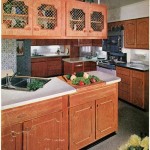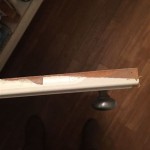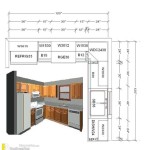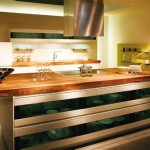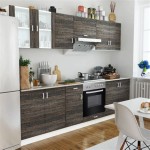Replacing Kitchen Cabinet Doors: A Comprehensive Guide
Kitchen renovations frequently involve significant budgetary considerations. A complete kitchen remodel, encompassing new cabinetry, countertops, and appliances, can represent a substantial financial investment. However, homeowners seeking to refresh the aesthetic of their kitchen without incurring excessive costs may consider a more targeted approach: replacing only the kitchen cabinet doors. This strategy allows for a significant visual transformation while preserving the existing cabinet boxes and hardware, offering a cost-effective alternative to a full-scale renovation.
The decision to replace cabinet doors alone requires careful consideration of several factors, including the condition of the existing cabinet boxes, the desired aesthetic, and the overall budget. While this option can be significantly cheaper than replacing the entire cabinetry system, it’s crucial to ensure compatibility between the new doors and the existing framework. This article provides a comprehensive guide to replacing kitchen cabinet doors, outlining the key considerations, options, and processes involved.
Assessing the Existing Cabinet Structure
Before embarking on a cabinet door replacement project, a thorough assessment of the existing cabinet boxes is paramount. The structural integrity of the cabinets directly impacts the success and longevity of the new doors. Key areas to examine include:
Box Condition: The cabinet boxes should be structurally sound, free from significant water damage, warping, or rot. Pay close attention to the areas around the sink and dishwasher, where moisture exposure is more likely. Minor imperfections, such as scratches or blemishes, can often be addressed with touch-up paint or refinishing.
Squareness and Alignment: Ensure that the cabinet boxes are square and properly aligned. Misaligned cabinets can create difficulties in installing new doors and result in an uneven appearance. A carpenter's square or level can be used to verify the squareness of the boxes. If significant misalignment is present, shimming or other structural adjustments may be necessary.
Hinge Compatibility: Evaluate the existing hinge system. While it may be possible to reuse existing hinges, it’s often advisable to replace them when installing new doors. This ensures compatibility, smooth operation, and prevents potential issues arising from worn-out or mismatched hardware. Note the type of hinge currently in use (e.g., concealed, face-frame, partial overlay) as this will influence the selection of replacement hinges.
Face Frame or Frameless Construction: Determine whether the cabinets are constructed with a face frame or are frameless (Euro-style). Face-frame cabinets have a frame around the opening of the cabinet box, to which the doors are attached. Frameless cabinets do not have this frame, and the doors attach directly to the sides of the cabinet box. This distinction is crucial when selecting new doors and hinges, as the mounting methods and hardware requirements differ significantly.
If the existing cabinet boxes are severely damaged or structurally unsound, replacing the entire cabinetry system may be the more prudent option. Attempting to install new doors on compromised cabinets is likely to yield unsatisfactory results and may ultimately lead to more extensive and costly repairs in the future.
Selecting New Cabinet Doors: Styles, Materials, and Finishes
Choosing the right cabinet doors is a critical step in achieving the desired aesthetic transformation. Numerous styles, materials, and finishes are available, each offering distinct advantages and drawbacks. Careful consideration should be given to the overall design goals, budget constraints, and the existing décor of the kitchen.
Door Styles: Cabinet door styles encompass a wide range, from traditional raised-panel designs to sleek, modern flat-panel options. Popular styles include:
Raised Panel: Characterized by a central panel that is raised above the surrounding frame, offering a classic and formal appearance.
Recessed Panel: Features a central panel that is recessed below the surrounding frame, providing a more understated and versatile look.
Flat Panel (Slab): A minimalist design with a flat, unadorned surface, often favored in contemporary kitchens.
Shaker: A simple and timeless style with a flat center panel and a clean, square frame. Shaker doors are highly versatile and complement a variety of kitchen styles.
Glass-Front: Incorporates glass panels, allowing for the display of dishware or decorative items. Glass-front doors can be further customized with different glass types, such as clear, frosted, or textured.
Materials: Common cabinet door materials include:
Wood: Offers natural beauty and warmth, with a wide variety of wood species available, such as maple, oak, cherry, and walnut. Wood doors can be stained, painted, or left with a natural finish.
MDF (Medium-Density Fiberboard): A cost-effective alternative to solid wood, MDF is a manufactured wood product that is smooth, stable, and easy to paint. MDF is a good choice for painted cabinets.
Plywood: A durable and stable wood product that consists of multiple layers of wood veneer glued together. Plywood is often used for cabinet door construction.
Laminate: A synthetic material that is bonded to a substrate, such as MDF or particleboard. Laminate doors are durable, easy to clean, and available in a wide range of colors and patterns.
Finishes: Cabinet door finishes play a crucial role in both aesthetics and durability. Common finishes include:
Paint: Offers a wide range of color options and can be applied to wood, MDF, or laminate doors. Painted cabinets are durable and easy to clean.
Stain: Enhances the natural grain of wood while providing a protective layer. Stain is available in a variety of shades, from light to dark.
Varnish: A clear coating that provides a protective layer and enhances the shine of the wood. Varnish is available in different sheens, such as matte, satin, and gloss.
Laminate: As both a material and a finish, laminate offers a durable and low-maintenance surface in a wide array of colors and patterns.
When selecting cabinet doors, it’s important to consider the existing hardware, such as knobs and pulls. Choosing doors that complement the hardware will create a cohesive and visually appealing design. Consider ordering samples of different door styles, materials, and finishes to evaluate them in the context of your existing kitchen.
Installation and Hardware Considerations
The installation process for new cabinet doors requires precision and attention to detail. Proper installation ensures that the doors are aligned correctly, operate smoothly, and provide a secure closure. Hardware selection also plays a crucial role in the functionality and aesthetics of the finished product.
Hinge Selection and Placement: Selecting the correct hinges is essential for proper door function. The hinge type must be compatible with both the cabinet door and the cabinet box. Common hinge types include:
Concealed Hinges (Euro Hinges): These hinges are hidden when the door is closed, providing a clean and modern look. Concealed hinges are typically used with frameless cabinets.
Face-Frame Hinges: Designed for cabinets with a face frame, these hinges attach to both the door and the frame. Face-frame hinges are available in a variety of styles, including overlay, partial overlay, and inset.
Butt Hinges: Traditional hinges that are mortised into both the door and the cabinet frame. Butt hinges are often used for inset doors.
The placement of hinges is critical for proper door alignment and operation. Use a hinge jig to ensure consistent and accurate placement. When replacing existing doors, the new hinges should be positioned in the same location as the old hinges to avoid drilling new holes in the cabinet boxes.
Door Alignment and Adjustment: After installing the doors, carefully check the alignment. Minor adjustments can be made using the adjustment screws on the hinges. Ensure that the doors are flush with the cabinet boxes and that there are no gaps or overlaps. If necessary, shims can be used to correct any significant alignment issues.
Hardware Installation: Install knobs or pulls according to the manufacturer's instructions. Use a template to ensure consistent placement of the hardware on all doors. Consider the size and style of the hardware in relation to the door size and style. Larger doors may require larger or more substantial hardware.
Additional Considerations:
Soft-Close Mechanisms: Consider installing soft-close mechanisms to prevent the doors from slamming shut. Soft-close mechanisms can be integrated into the hinges or added as separate components.
Door Bumpers: Install door bumpers to protect the cabinet boxes from damage and reduce noise when closing the doors.
Professional Installation: If you are not comfortable with the installation process, consider hiring a professional installer. A professional installer can ensure that the doors are installed correctly and that any potential issues are addressed promptly.
Replacing kitchen cabinet doors can be a transformative and cost-effective way to update the look of your kitchen. By carefully assessing the existing cabinet structure, selecting the right doors and hardware, and paying attention to detail during installation, homeowners can achieve a professional-looking result without incurring the expense of a full kitchen remodel.

Fast Cabinet Doors Custom Replacement For Kitchen Cabinets Cupboards

Tür Fronten Für Küchen Mobelde Com Kitchen Cabinet Door Styles

Cabinet Doors Drawers Replacement Revelare Kitchens

Types Of Cabinet Doors 10 Popular Door Styles Cabinetdoors Com

Reface Or Replace Your Kitchen Units Dream Doors

Kitchen Cabinet Door Styles A Buyers Guide Ottawa On Types Materials Installation Design Panels Slab Flat Shaker Raised Glass Cathedral Custom Semi Prefab Melamine Polyester Solid Wood Medium Density Fibreboard

Diffe Types Of Kitchen Cabinet Doors For Your Home

Diffe Types Of Kitchen Cabinet Doors For Your Home

How Much Are Replacement Kitchen Doors Guide 2024

How To Add Glass Cabinet Doors Confessions Of A Serial Do It Yourselfer
Related Posts

